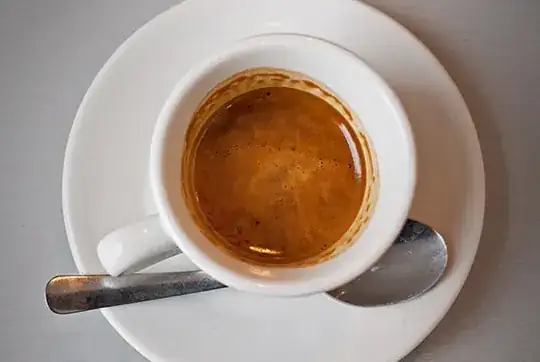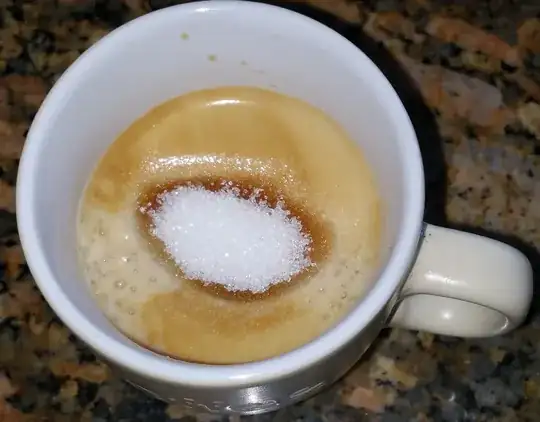The standard espresso drink is the double espresso (a double espresso shot). Although you can get single or triple espressos, if you are comparing quality, the double espresso is the standard. Regardless of which type of shot you order, if you are comparing quality across different cafes, you should always order the same thing (ie don't order a single at one cafe and a double at another).
Once again for standardization, I would recommend ordering a double at each one.
My explanation of good espresso will be about straight espresso (no milk, no sugar) in an espresso mug/cup.
Here are some characteristics of a quality double shot:
- Temperature:
- The espresso should be quite hot when served. If it is only lukewarm or warm right after it is made, then the barista did not heat the cup that it was served in.
- It should be to the temperature where it is too hot to drink (for most people). It should only take a minute or so to cool off. Perhaps two minutes.
- Crema:
- There should be a nice layer of crema on top of the espresso (a few millimeters thick, completely covering the espresso). This comes from the release of carbon dioxide when the espresso is extracted under pressure.
- The color should be golden-brown to dark brown for a double shot.
- The color will not always be uniform, it will sometimes be slightly lighter where the shot actually poured in the spot on the crema.
- The crema should remain for at least three - five minutes if not longer.
- Taste:
- The espresso should be bitter, but not too bitter (high levels of bitterness are more characteristic of espresso long shots).
- It should be rich, but not too rich (again, high levels of richness are more characteristic of espresso ristretto shots).
- It should NOT be sour. If it is sour, it has been sitting for too long before being served or was over-extracted.
- It should not taste watery, this is usually a characteristic of under-extraction.
- Smell:
- Hard to describe for espresso and the aroma will vary a lot. One thing to avoid is a 'sour' smell, which usually indicates a sour taste, as described above, or that the coffee being used is inherently too acidic.
- Consistency:
- Espresso is going to be thicker and more viscous than regular drip coffee, but it won't be syrupy. When you are done your espresso, the drop or two that remain at the bottom of the cup, when dried should leave a distinct brown residue on the bottom of the cup.
Notes, and other things to keep in mind:
- You will have to remember that different cafes will use different varieties of beans for making espresso, so this is going to affect the flavor.
- Different cafes use different amounts of ground espresso and different amounts of water when preparing their espresso. The industry standard is 2 oz (about 60 milliliters) for a double shot, but in my cafe we do our double shots to 3 oz.
- Most importantly, learning to recognize good espresso is an experienced based endeavor, just like with wine, beer, or food.
On a personal note, I love to do this with cafes as well! I always judge the quality of a cafes espresso and ability by ordering my favorite drink: a double espresso long. In fact, I am going to a new cafe to do it today!!
A Lovely Looking Cup of Espresso:


